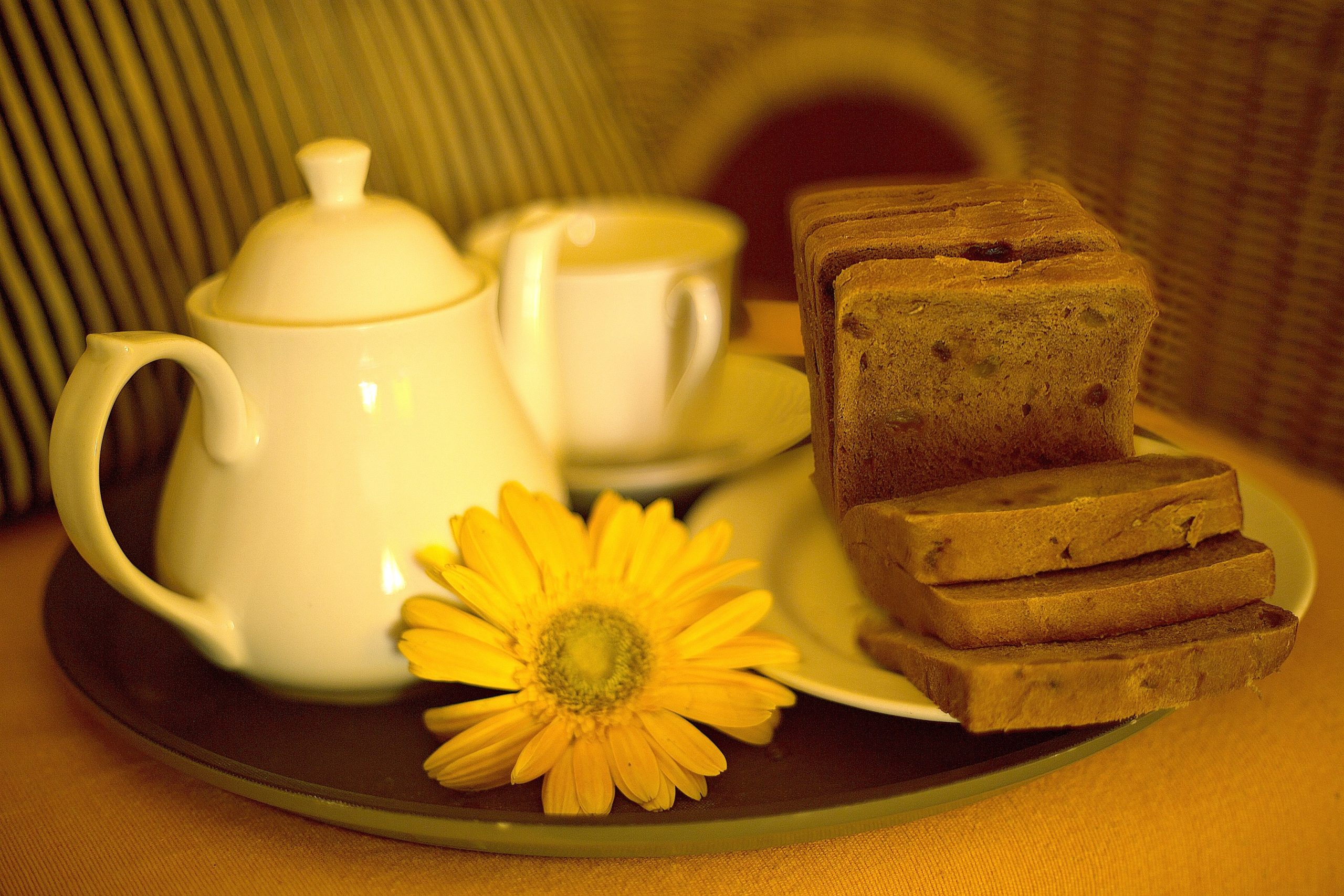Today, we have with us, a very interesting guest who is here to share some insight into the evolution of the very rich culture and cuisines of Kerala, that emerged as a result of the ancient spice trade in this southern part of the country. Spices still are a huge part of trading activity in Kerala with over three-fourths of spice exports from India sourced from the state.
That said, let us say hello to Tanya Abraham from Kochi, an ex-journo, and now a published author, who has just launched her second book titled ‘Eating With History: Ancient Trade-Influenced Cuisines of Kerala.’ Over a quick chat, we dig into her roots, colorful journey of Kerala cuisine, and of course her book.

Tanya Abraham from Kerala, author of ‘Eating With History: Ancient Trade-Influenced Cuisines of Kerala’
-
Hi Tanya, so nice to have you with us! Please introduce yourself to our readers.
My name is Tanya Abraham and I was raised in Fort Kochi, an ancient town in Kerala. I currently live in Kochi. I work as an art curator and am the founder of the non-profit ‘The Art Outreach Society (TAOS).‘ I am currently pursuing a Ph.D. in Practice in Curating at Zurich University of the Arts. Previously, I worked as a journalist. This is my second book.
“I am unable to separate memories from my writing. I search for the soul of what makes people who they are. I found that food is an expression of identities and histories, of people’s families and experiences. As mentioned, at the heart of my observations as a child was my grandmother’s kusinchya (Kitchen in Portuguese-Malayalam)”

Eating with History: Ancient Trade-Influenced Cuisines of Kerala by Tanya Abraham
-
Tell us something about your roots, your birthplace, and some interesting nuggets of that culture..
I grew up in Fort Kochi, a small town that was once a European colony to the Portuguese, Dutch and the British. The core of its coveted nature to the world was the spice trade. Fort Kochi and adjoining Mattancherry continue to be a melting pot of cultures. Not just from European influences but the Jews from the Middle East and the Mediterranean, descendants of Arab traders, and communities from various parts of India who plied their way to more lucrative a destination. The influence of the communities settled in every nook and corner of the town, and I grew up in the midst of it all.
Pepper, the reason why traders plied to Kerala shores from across the seas

Pepper, the reason why traders plied to Kerala shores from across the seas | Photo by Mythiri Babu
The town became an important trade port after the flood of 1341 AD when the port in the region of Kodungallur (often connected to the famed port of Muziris) and a natural harbor opened up in Kochi. My paternal family hails from Kodungallur and moved to Kochi around 250 years ago. I grew up not only absorbing the multicultural flavors of the place but also curiously watching the close amalgamation of thoughts of the communities.
I grew up in Fort Kochi, a small town that was once a European colony to the Portuguese, Dutch and the British. The core of its coveted nature to the world was the spice trade. Fort Kochi and adjoining Mattancherry continue to be a melting pot of cultures.
Cleaning pepper at the spice market in Kochi

Cleaning pepper at the spice market in Kochi | Photo by Praveen Rengaraj
Breudher, a Dutch bread still made in Fort after two centuries

Breudher, a Dutch bread still made in Fort after two centuries | Photo by Mythiri Babu
-
Share some of your memories from your early family life in Fort Kochi, and its significance in shaping your latest book on the confluence of cultures and cuisines of Kerala.
My family home (Tarawad) was at the center of the Independence movement for close to a hundred years, and when I was born, I saw remnants of the deep patriotism that existed both in the family and the town. Fort Kochi was called British Cochin and although a small town in an enormous nation fighting for independence, it was a prominent station for the British.
For me, life at the Tharavad* as a child (*a Malayalam word for ancestral home, usually used as the common house for the joint family system), the stories I relished day after day from family members, the visitors from various communities etched an unforgettable experience in my mind.
“My grandmother’s kitchen (Kusinchya in Portuguese-Malayalam), to whom the book is dedicated, remained the soul of all the happenings of the home. It was not only family happenings but also the town events. As an adult, I realized that at the core of all this, was a common vein which ran through the heart of the town’s existence, identities of its peoples- in the various food flavors.”
“Pepper Roast chicken, Latin Catholic preparation. It was often found on my grandmother’s dining table on festive occasions.”~ Tanya

“Pepper Roast chicken, Latin Catholic preparation. It was often found on my grandmother’s dining table on festive occasions”~ Tanya Abraham | Photo by Mythiri Babu
“Puttu being cooked in a traditional puttu maker. A staple made from rice flour, it is said it was the Portuguese who innovated it as a new form of rice cooking” ~ Tanya

Puttu being cooked in a traditional puttu maker. A staple made from rice flour, it is said it was the Portuguese who innovated it as a new form of rice cooking | Photo by Praveen Rengaraj
-
Enlighten us a little bit more on how food habits, cooking methods, popular spices, and ingredients carry the stamp of a culture’s evolution – with special reference to the evolution of the unique cuisines of Kerala..
There is a natural progression that takes place when cultures influence each other, very often organic in nature. This happens over many years as one influence melts and marries with the other, a juxtaposition that happens, which creates many layers to a cuisine.
Because there are a number of unique factors that influence the creation of food and cuisines, Kerala’s cuisines that emerged from its ancient spice trade is unique to it alone. The people who arrived in Kerala and who lay the foundation for new communities had to cook with existing Kerala ingredients. This means the merging of traditions, habits and foreign cultures with the locals.
Whole duck roast, a preparation of the Syrian Christian community, and today, a popular dish in Kerala

Whole duck roast, a preparation of the Syrian Christian community | Photo by Mythiri Babu
“When religious laws play a part, cooking tends to adhere to those laws and needs. For example, Jews never mix milk and meat. So, coconut milk was used instead. A Jewish recipe found new flavor with a new ingredient.
Red chili too was never a part of our cuisine, it was the Portuguese who brought it to us, including fruits like pineapple, sapota, custard apple, tamarind, and others. Vinegar in cooking was introduced by them, we used vinegar but not as a cooking element. I would think the coming together of ingredients always produces something new and different. It is never a singular story but a multilayered one.”
“Achappam or Rose Cookies found in communities by different names is a tea-time snack made from rice flour and deep-fried. This recipe was shared by a Jewish family. Achappam is known as Atz’afom amongst the Jews, rose-cookies amongst the anglo Indians and Achappam amongst the Syrian Christians and Latin Catholics” ~Tanya Abraham

Achappam or Rose Cookies found in communities by different names is a tea-time snack made from rice flour and deep-fried | Photo by Mythiri Babu
-
One last question. Tell us about a little known fact about Kerala cuisine.
There are a few quintessential Kerala dishes often connected to Kerala cuisine. But what is not widely known is that because of Kerala’s multicultural makeup, cuisines follow various routes. The base of these cuisines is the ancient spice trade, brought to Kerala shores from lands across the oceans. More than half a century later, these continue to be an indelible part of Kerala’s food culture. A very important factor is religion-How religion is an identity factor that marks certain food traditions in Kerala, an organic growth, and the interesting journey the cuisines in my book have taken, pertain to Kerala alone. Nowhere else in the world exists this unique amalgamation and interesting rise of flavors.
You can buy Tanya Abraham’s book ‘Eating with History: Ancient Trade-Influenced Cuisines of Kerala.’ on Amazon.

Book ‘Eating with History: Ancient Trade-Influenced Cuisines of Kerala’ by Tanya Abraham
